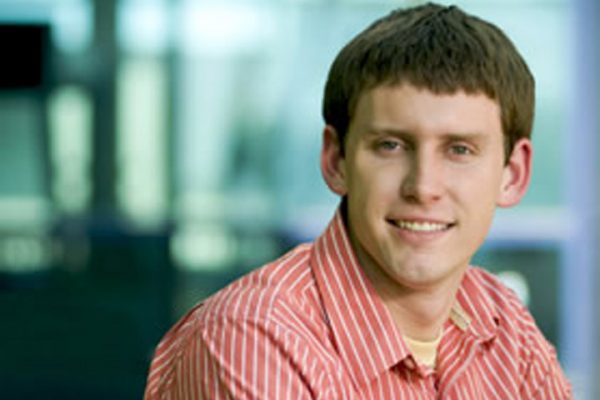
“After looking into colleges, I discovered the impact the National High Magnetic Field Laboratory had on FSU and the incredible research opportunities this would provide.”
John Walsh’s experience at The Florida State University demonstrates how the resources of an elite research university—and the opportunity to participate in undergraduate research—enhance undergraduate education.
In high school, John decided he wanted to pursue an undergraduate degree in biomedical engineering. “After looking into colleges, I discovered the impact the National High Magnetic Field Laboratory had on FSU and the incredible research opportunities this would provide, which ultimately led to my decision to attend FSU and to declare a biomedical engineering major.”
He has been incredibly successful in taking advantage of those opportunities. John received an Undergraduate Research and Creative Endeavors Award from the Office of National Fellowships to support his research under the direction of Dr. Samuel Grant at the National High Magnetic Field Laboratory. His research “utilized the 21.1 T ultra-wide bore magnet to perform magnetic resonance imaging of isolated neurons.”
The chance to conduct undergraduate research has allowed him to apply his knowledge and work closely with faculty. “It has been exciting to see how classroom principles can be applied to real-world practice in this project.”
Continuing his work at the National High Magnetic Field Laboratory, John is currently working on his Honors in the Major thesis, titled “Single Cell Analysis of Osmosis,” a research project using magnetic resonance imaging (MRI) to quantify changes in intracellular sodium distributions in isolated neurons. Through his Honors in the Major research, he hopes to better understand neurodegenerative diseases and cellular responses to changing external environments.
“This project utilizes the National High Magnetic Field Laboratory’s highest field imaging magnet, the 900 MHZ, 21.1 T ultra-wide bore magnet. MRI analysis of both sodium and hydrogen reveals the movement of water and sodium within the neuron in response to diffusion and osmosis, which can be promoted through osmotic and neurotoxic insults to the extracellular environment. On a larger scale, this project will provide a wealth of information about osmoregulation and cell volume regulation, processes critical to cell viability and functionality,” he explains.
John’s success at Florida State University extends beyond his undergraduate research. He is an Honors student with a 4.0 GPA. As a freshman, the Chemistry Department recognized John with an award for Outstanding Performance in the general chemistry course sequence. He is a member of Phi Eta Sigma Honor Society, the National Society of Collegiate Scholars, Phi Kappa Phi Honor Society, Tau Beta Pi Engineering Honor Society and Alpha Chi Sigma Professional Chemistry Fraternity. As a leader in the Biomedical Engineering Society, John traveled to conferences where “current research efforts are presented in an effort to better the medical community and further the knowledge of current diseases and modern medicine.”
John believes that “maintaining a balance between school and personal well-being is important.” In addition to his studies, he makes time to bike, run and play racquetball, as well as give back to the community. He has participated in community service projects with fellow engineers through Tau Beta Pi. As treasurer of the Biomedical Engineering Society, John has helped raise money to support the American Cancer Society’s Relay for Life, the National Multiple Sclerosis Society’s Walk MS, and The Leukemia & Lymphoma Society’s Light the Night Walk.
John hopes to continue his research at the graduate level in an M.D.-Ph.D. program and to help develop new approaches for the treatments for diseases. “After graduation, I plan on continuing my education through graduate school in biomedical engineering. Ultimately, I would like to work in a field focused in research medicine and tissue engineering.”




